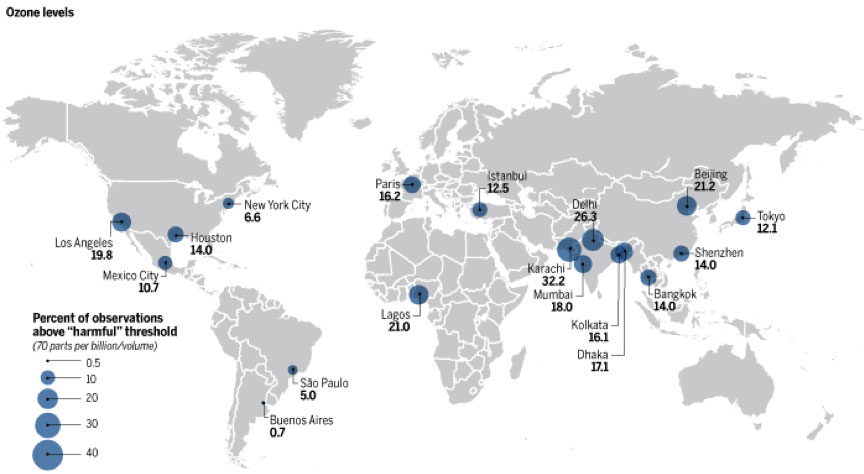Science
Revealing Air Quality Over Megacities

Sometimes air pollution is obvious -- you can see it and smell it. But pollution is harmful to humans at levels much lower than what we can detect with our senses. Some parts of the world have extensive pollution monitoring networks to measure what is in the air we breathe, but in other places there are few measurements to be found. Understanding where pollution comes from is also a challenge – it isn’t just from local sources, such as industry and automotive emissions – it can also be transported from surrounding areas. The more we know about what is in the air and where it comes from, the better we can try to intervene and lessen pollution’s consequences. Doing so is critical because the World Health Organization estimates that about 7 million people die every year from exposure to polluted air.
Beginning in 2013, NASA’s Tropospheric Emissions Spectrometer (TES) megacity dataset provided consistent, year-round data on several gases relevant to poor air quality, including ozone, ammonia, formic acid, and methanol. Scientists are also using complementary measurements from other satellites, such as AIRS and MODIS, to supplement and validate the TES data. Combining all of that satellite data with more traditional ground-based and in situ measurements, scientists are able to see a more complete picture of the air pollution issue in the largest cities in the world.
How big is the problem? In 1950, only two cities had over 10 million inhabitants -- New York and Tokyo. Now there are about 37 worldwide and over 500 million people call them home --and the population trend is only increasing. The TES satellite regularly observed 19 of these urban giants, and a recent study led by the Atmospheric and Environmental Research firm using TES data focuses on two of them, Mexico City, Mexico and Lagos, Nigeria.
Studying high pollution events in Mexico City and Lagos shows a clear correlation with seasonal dry weather patterns and biomass burning events. As it turns out, Lagos is consistently more polluted than Mexico City, which has long been thought to be a place to avoid because of dangerously bad air. This is a great example of how satellite measurements can change our perceptions about specific places by providing facts, not myths, and can give decision makers the information they need to put processes in place to mitigate the sources of pollution.
Citation: Cady-Pereira, K. E., Payne, V. H., Neu, J. L., Bowman, K. W., Miyazaki, K., Marais, E. A., Kulawik, S., Tzompa-Sosa, Z. A., and J.D. Hegarty, Seasonal and spatial changes in trace gases over megacities from Aura TES observations: two case studies, Atmos. Chem. Phys., 17, 9379-9398, https://doi.org/10.5194/acp-17-9379-2017, 2017.
Mission Highlights
Swipe to view more highlights
Loading mission highlights...